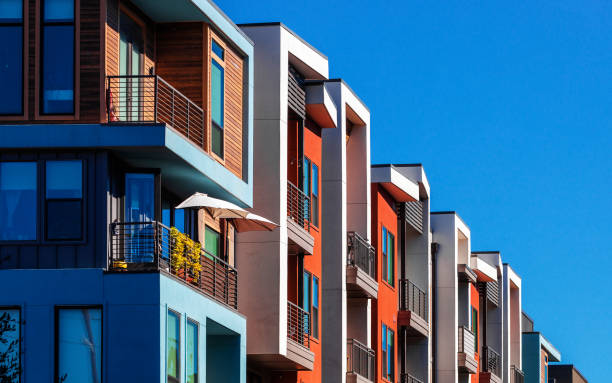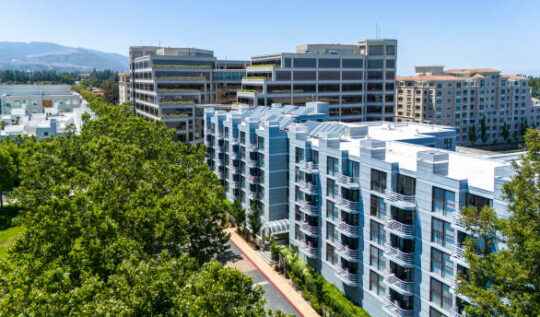Multifamily Housing in Los Angeles 2025: Costs, Permits, and Outlook
Los Angeles is still one of the hardest real estate markets in the country. Yet, it remains one of the most rewarding. In 2025, the city faces high demand for housing, even as costs rise and borrowing stays expensive. People continue to come for jobs, culture, and lifestyle. That steady demand keeps pressure on rents and supply.
Table of Contents
ToggleFor investors and builders, the chance to grow is real. But the challenge is not just breaking ground. It is moving projects through permits, zoning, and approvals. Those steps can take years if not handled well. JDJ Consulting Group helps clients cut through delays, lower risks, and bring projects to market faster.
This article explains the state of the multifamily housing in Los Angeles 2025. It also shows what developers, owners, and investors can do to succeed.
Executive Summary: The State of Los Angeles’ Apartment Market in 2025
The Los Angeles apartment market enters 2025 with steady growth. Occupancy is high, and rents are still rising, though at a slower pace. New units are under construction, but most are getting absorbed.
The city’s job base drives this strength. Entertainment, health care, and logistics continue to add workers. Tech firms also keep bringing people in. This creates new households, which supports apartment demand.

Developers, however, face big hurdles. Costs are higher, insurance is harder to secure, and local rules add time. Wildfire zones and environmental reviews slow down projects even more.
What this means for developers and investors:
Look at each submarket, not just citywide averages.
Build in extra time and cost for permits and entitlements.
Expect climate risks and insurance limits to affect budgets.
Table 1: Los Angeles Apartment Market Snapshot, 2025
| Measure (2025) | Los Angeles | U.S. Average | What It Means |
|---|---|---|---|
| Occupancy | ~95% | ~94% | Tight market, low vacancy |
| Rent Growth (year) | ~2.5% | ~2.0% | LA rents rise faster than nation |
| New Units Delivered | 12,000+ | — | Supply is growing but balanced |
| Absorption | Steady | Slower | LA demand keeps up with supply |
| Cap Rates (multifamily) | 5.0–5.5% | 5.5–6.0% | Investors still pay a premium |
Market Fundamentals: Demand, Supply, and Absorption in Los Angeles
The basics of the LA housing market remain strong. People want to live here, jobs keep growing, and households keep forming. At the same time, new projects face delays from permits and costs.
Demand Drivers and Demographic Trends
Los Angeles draws people from across the world. Jobs in film, health care, tech, and shipping keep the economy diverse. Young renters seek apartments near transit. Families rent larger units because buying is out of reach. Investors chase stable, long-term cash flow.
Main groups driving demand:
Young professionals in urban hubs.
Families priced out of owning.
Investors seeking stable rental income.
This mix of renters keeps occupancy rates high and ensures steady demand across most submarkets.
📊 Los Angeles Multifamily Rent Growth Forecast (2025)
Source: Berkadia 2025 National Apartment Research Report
New Supply: Pipeline, Permits, and Timing
New apartments are under way across the city. Yet, not all will reach the market on time. Permitting delays, community opposition, and rising costs stretch timelines. Wildfire rebuilding also diverts resources.
Factors slowing new supply:
Permit delays at city agencies.
High construction costs for labor and materials.
Wildfire recovery pulling crews and funds.
Table 2: Typical Development Timeline in Los Angeles (2025)
| Phase of Project | Time Needed (Months) | Main Challenges in LA |
|---|---|---|
| Site Purchase & Study | 3–6 | Zoning and due diligence |
| Entitlement & CEQA Review | 12–24 | Lawsuits, public review |
| Building Permit Process | 6–12 | Plan checks, resubmits |
| Construction | 18–30 | High costs, labor gaps |
| Lease-Up | 6–12 | Competing supply nearby |
Absorption and Vacancy by Submarket
Not every LA submarket looks the same. Downtown has more vacancy with luxury deliveries. The Westside stays strong due to limited supply. The Valley offers balance, while South LA draws interest for affordable projects.
Submarket trends to watch:
Downtown LA: More vacancy, luxury units compete.
Westside: High demand, little new supply.
San Fernando Valley: Balanced rents and occupancy.
South LA: Growth in affordable and workforce housing.
For investors, choosing the right submarket is key. A project in a strong area can lease up fast. In weaker spots, it may take longer and cut returns.
Financing and Lending Conditions in Los Angeles
Financing is harder to secure in 2025 than in past years. Higher interest rates and tighter bank standards mean developers need more equity up front.

What Lenders Look for Now
Strong sponsorship: Banks prefer experienced developers with proven track records.
Lower leverage: Loan-to-value ratios are often capped at 55–60%.
Stabilized assets: New projects must show realistic rent growth to qualify.
Detailed plans: Clear entitlement and permitting strategy increases approval chances.
This creates challenges for new entrants. But those who plan carefully and work with trusted consultants are still able to secure financing.
Alternatives to Traditional Bank Loans
Private lenders offering higher-cost bridge financing.
Debt funds stepping in where banks pull back.
Joint ventures where equity partners share risks and returns.
For developers, the message is clear: the cost of capital is higher, but deals still happen when projects are well-structured.
Development Pipeline and Project Spotlight
Los Angeles still has one of the largest multifamily pipelines in the nation. Yet new construction is slowing compared to the peak years of 2021–2023.
Why Fewer Projects Are Starting
High construction costs squeeze margins.
Long entitlement timelines delay shovels hitting the ground.
Financing remains expensive and selective.
Current Hotspots for Development
Downtown LA: Many luxury units, but slower absorption.
Hollywood and Koreatown: Popular for mid-rise mixed-use projects.
Westside: Limited land, but high rents keep new projects attractive.
Valley submarkets: Growing demand for workforce housing.
Example: Recent Multifamily Projects
High-rise luxury towers in Downtown LA face competition and longer lease-ups.
Garden-style and mid-rise projects in the Valley lease faster and serve unmet demand.
Transit-oriented projects near Metro stations remain popular due to LA’s push for density.
🏗️ Los Angeles Multifamily Development Timeline
6–12 months
12–18 months
6–12 months
18–24 months
Average entitlement + build cycle: 3.5–5 years (City of Los Angeles Planning Dept.)
Regulatory Environment in Los Angeles
The regulatory framework in Los Angeles shapes every stage of development. From zoning reviews to tenant protections, policies can make or break deals.
Key Regulations Affecting Developers
Zoning and Entitlements: Many areas require lengthy approvals and community hearings.
CEQA Reviews: Environmental lawsuits are common and add delays.
Rent Control Rules: LA’s Rent Stabilization Ordinance caps rent increases for older units.
SB 9 and SB 10: State laws push for density but face local restrictions.
How Regulations Impact Projects
Smaller developers face higher risks due to long timelines.
Larger firms often absorb delays but at higher carrying costs.
Tenant protection laws make repositioning older buildings more complex.
Navigating the System
Working with experts in permitting and zoning saves time and reduces risk. Many projects fail not because they lack demand, but because the approval process stalls.
This is where JDJ Consulting Group helps. We assist developers in navigating city planning, zoning hurdles, and community engagement so projects can move forward faster.
Demographics and Demand Drivers in Los Angeles
Los Angeles has unique housing demand shaped by population growth, migration, and household trends.
Who Is Driving Demand?
Young professionals: Many rent longer due to high home prices.
Immigrant communities: Continue to grow and need diverse housing options.
Remote and hybrid workers: Look for space, amenities, and access to transit.
Aging population: Increasing demand for senior-friendly housing.
Affordable Housing Pressures in Los Angeles
Affordability remains the city’s largest housing challenge. Median rents far exceed income growth, creating stress for many households.
Why Housing Feels Unreachable
Construction costs drive up new unit prices.
Land is scarce and expensive in core neighborhoods.
Permitting delays slow down affordable housing starts.
Wage growth lags behind housing inflation.
City and State Responses
Inclusionary zoning requires affordable units in some new projects.
Tax credits and subsidies help, but competition for funds is intense.
Public-private partnerships are emerging to close financing gaps.
The Role of Private Developers
Developers who balance profit goals with affordable components can gain approvals faster. In some cases, affordable units unlock density bonuses or permit streamlining.
For JDJ Consulting Group clients, this means planning for affordability early in project design to avoid setbacks later.
Opportunities for Investors and Developers in 2025
Even with challenges, Los Angeles offers strong openings for those who adapt.
Where Opportunities Lie
Workforce housing: Growing demand in Valley and Inland Empire submarkets.
Adaptive reuse: Converting offices into housing, especially downtown.
Transit-oriented projects: Supported by public funding and demand.
Sustainable housing: ESG-focused investors favor green-certified developments.
Strategies That Work in 2025
Partnering with experienced zoning consultants to cut approval times.
Targeting underbuilt segments instead of oversaturated luxury markets.
Using creative financing, such as joint ventures and tax incentive programs.
Building flexible unit layouts that meet hybrid lifestyle needs.
Los Angeles remains a complex but rewarding market. Developers who know how to manage regulations, costs, and demographics can still achieve strong returns.
Risks and Challenges Facing Developers in Los Angeles
Even with strong demand, developers face many hurdles in Los Angeles.

Common Challenges
High construction costs: Labor, materials, and insurance remain expensive.
Lengthy approvals: Entitlements and permits can stretch years.
Regulatory uncertainty: New rules on zoning and affordability add risk.
Community pushback: Local opposition can delay or reshape projects.
Interest rates: Financing remains tight for large multifamily projects.
How Developers Can Respond
Budget carefully for cost increases and delays.
Engage consultants early to anticipate zoning or entitlement issues.
Stay flexible with design to meet evolving code requirements.
Build strong community outreach to reduce opposition.
The Los Angeles market rewards those who plan ahead and manage risk carefully.
How JDJ Consulting Group Helps Navigate the Market
At JDJ Consulting Group, we guide property owners through every stage of the Los Angeles housing process.
Our Expertise
Entitlement management: We help projects move smoothly through approvals.
Permit expediting: Our team reduces costly delays with city departments.
Zoning strategy: We identify the best path to maximize property value.
Market insights: Data-driven analysis helps clients decide where to invest.
Why Work With JDJ?
We combine local knowledge with hands-on project experience.
We work closely with architects, engineers, and attorneys to reduce roadblocks.
We focus on both compliance and opportunity, so projects succeed.
Our role is to make development in Los Angeles less stressful and more predictable.
📈 LA Vacancy Rate vs. National (2025)
Source: Berkadia 2025 Forecast National Apartment Report
Conclusion: The Outlook for 2025 and Beyond
Los Angeles will remain one of the nation’s most competitive housing markets in 2025. High costs, complex rules, and community concerns make development difficult. Yet, demand for multifamily housing remains steady, driven by jobs, demographics, and affordability pressures.
Key Takeaways
Challenges: Rising costs, approvals, and affordability mandates.
Opportunities: Adaptive reuse, workforce housing, transit-oriented sites.
Solutions: Strategic planning, zoning expertise, and permit support.
For developers and investors, success in 2025 comes down to navigating complexity with the right partners.
At JDJ Consulting Group, we help turn challenges into opportunities. Whether it’s securing entitlements, expediting permits, or shaping long-term strategies, we provide the expertise needed to thrive in Los Angeles’ multifamily market.
Call us at (818) 793-5058 or contact us online to discuss your project with our experts.
Disclaimer: This article references insights from the Berkadia 2025 Forecast National Apartment Research Report. Contact the consultant for the most updated data and insights.
FAQs on Multifamily Housing in Los Angeles 2025
What is the outlook for multifamily housing in Los Angeles in 2025?
The multifamily housing outlook in Los Angeles remains strong but complex. Demand continues to outpace supply, driven by steady job growth and population needs. However, higher financing costs and stricter regulations make development slower and more expensive.
Key factors shaping 2025:
Ongoing housing shortage across the city
Slower construction starts due to higher interest rates
Strong long-term rental demand in most submarkets
Are Los Angeles rents expected to rise in 2025?
Yes, rents are projected to grow moderately in 2025. Rent growth will not be as sharp as in prior years, but consistent demand and low vacancy rates will keep prices moving upward.
What’s driving rent increases:
Limited new apartment completions
High demand from young professionals and families
Inflationary pressures on utilities and maintenance
Most experts estimate rent growth in the range of 2–3% across LA County.
What submarkets in Los Angeles offer the best opportunities?
Some LA submarkets show more resilience than others. Areas with limited new construction and strong workforce demand tend to perform best.
Promising submarkets include:
Westside (Santa Monica, Culver City, Venice): High demand, low vacancy, strong renter base
San Fernando Valley: More affordable relative to Westside, strong workforce housing need
Downtown LA: Higher vacancy but good opportunities for adaptive reuse conversions
Investors should analyze supply pipelines and local zoning allowances before committing to new deals.
How long does it take to get permits for a multifamily project in Los Angeles?
Getting approvals in Los Angeles is often one of the biggest hurdles for developers. The entitlement and permitting process typically takes between 2 to 4 years, depending on project type.
The timeline is influenced by:
CEQA environmental reviews
Community opposition or appeals
Project size and zoning compliance
Availability of city planning staff
Working with permit expeditors and zoning consultants can reduce delays and save costs.
🧮 LA Rent Affordability Calculator
Enter your monthly income to estimate affordable rent (30% rule):
📢 Need Help With LA Multifamily Permits?
JDJ Consulting Group guides developers through zoning, entitlements, and permitting in Los Angeles. Save time and reduce project risks with expert support.
Get a Free ConsultationWhat are the biggest challenges for multifamily developers in Los Angeles?
Building in Los Angeles is not simple. Developers face several obstacles that add time and costs to projects.
Common challenges include:
High construction costs for labor and materials
Lengthy entitlement and CEQA review process
Strict affordable housing requirements
Difficulty securing financing at current rates
Neighborhood pushback and political hurdles
Despite these challenges, developers who plan carefully and work with local experts can still find profitable opportunities.
How does affordable housing impact new development in Los Angeles?
Affordable housing is a central part of LA’s housing policy. Developers must either build a portion of units as affordable or pay “in-lieu” fees.
Impact on projects:
Adds to upfront development costs
Can slow down entitlement timelines
Unlocks density bonuses that allow more units on the same site
In some cases, may qualify for expedited approvals
Many developers are using mixed-income models to balance financial feasibility with city requirements.
What financing options are available for multifamily projects in Los Angeles?
Financing has become more selective in 2025. Traditional banks remain cautious, requiring higher equity contributions.
Available financing paths include:
Bank loans: Lower leverage, stricter terms
Private debt funds: More flexible but higher interest rates
Joint ventures or syndications: Shared risk with investors
Bridge financing: Temporary funding while waiting on permanent loans
Developers often need creative capital stacks to make deals work in today’s market.
Is adaptive reuse a good investment strategy in Los Angeles?
Yes, adaptive reuse has gained strong momentum. Converting older office or industrial spaces into apartments avoids some entitlement hurdles and addresses vacant building stock.
Benefits of adaptive reuse:
Often faster than ground-up construction
Avoids lengthy zoning changes in many cases
Can reduce environmental and community opposition
Meets strong demand for urban living in areas like Downtown LA
Challenges remain with building code compliance and retrofit costs, but the strategy is proving attractive.
How does JDJ Consulting Group help developers in Los Angeles?
JDJ Consulting Group specializes in guiding developers through the complex LA market. Their consulting services help reduce delays, lower risks, and improve project outcomes.
Core services include:
Permit expediting to shorten approval times
Zoning and entitlement strategy
Market research and investment analysis
Project management support across all phases
Developers gain local expertise and personalized guidance, which is critical in navigating Los Angeles’ housing landscape.
What role does zoning play in Los Angeles multifamily housing?
Zoning is one of the biggest forces shaping multifamily projects in LA. It controls density, building height, parking, and overall feasibility.
Key zoning factors:
Many areas remain restricted to single-family or low-density uses
Transit-oriented communities allow for higher density projects
Developers often need variances or zone changes, which add time
Zoning missteps can lead to costly redesigns or project delays
Understanding zoning rules is essential before acquiring land.
Will interest rates affect Los Angeles apartment construction in 2025?
Yes, higher interest rates are having a clear effect on construction. Developers must adjust budgets and financing strategies.
Current impacts include:
Higher borrowing costs for both construction and permanent loans
Lower project feasibility, especially in marginal submarkets
Greater equity requirements from lenders
Slower pace of new construction starts
Until rates ease, many developers will focus on smaller or phased projects.
Is Los Angeles still a good market for multifamily investment in 2025?
Yes, Los Angeles remains a top U.S. market despite challenges. Long-term fundamentals are strong, even if short-term costs are high.
Why LA remains attractive:
High population density and job diversity
Ongoing housing shortage keeps vacancy rates low
Strong rent growth potential over the next decade
Diverse submarkets offering different strategies
For investors with patience and the right partners, Los Angeles multifamily continues to be a solid bet.





